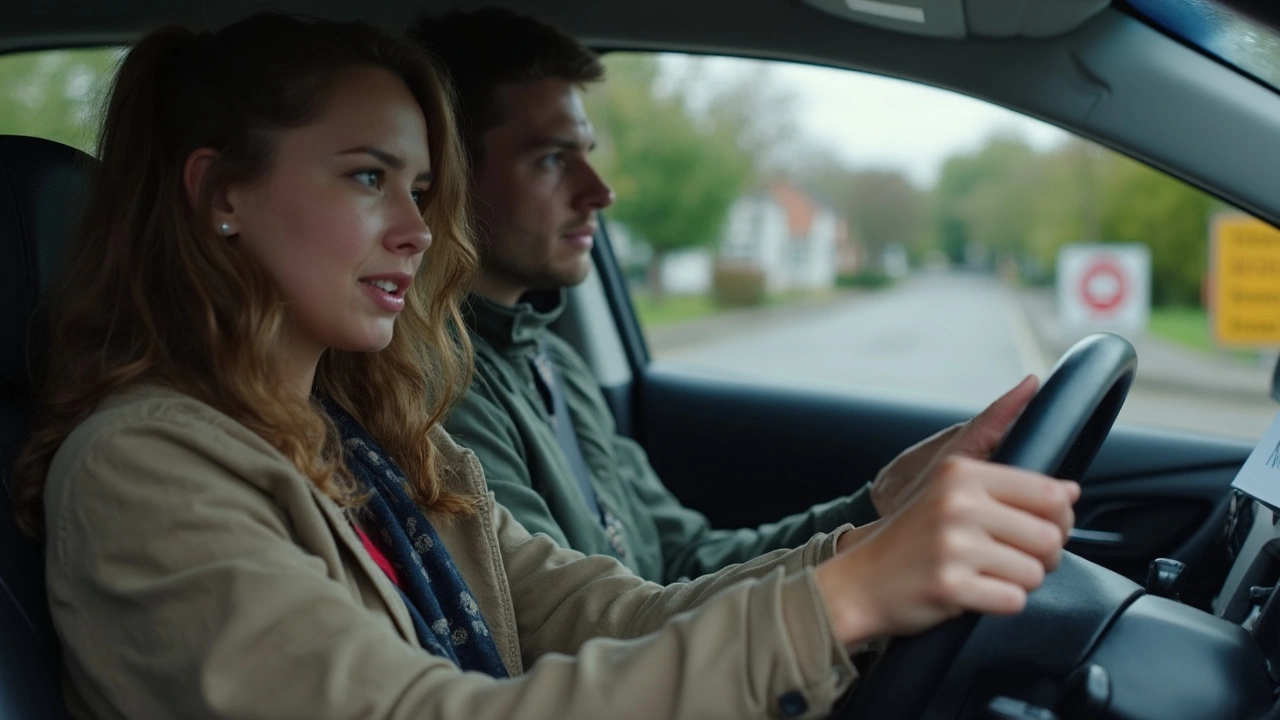Fail Points Driving Exam VA: What Trips Up Most Test‑Takers
If you’re gearing up for the Virginia road test, you’ve probably heard that the exam can be harsh on small errors. The truth is, most failures come from a handful of repeat mistakes. Knowing those fail points in advance lets you focus your practice where it matters most.
Common Fail Points
1. Observation gaps. Inspectors watch for proper mirror checks, blind‑spot checks, and looking ahead. Skipping a quick glance before changing lanes or merging is an instant fault.
2. Signal misuse. Forgetting to signal, signaling too early, or holding the signal on for too long both cost points. Keep your hands on the wheel, but your eyes on the road, and cue the signal at least three seconds before the move.
3. Lane positioning. Driving too close to the curb, drifting across lane lines, or hugging the center line shows poor control. Aim to stay in the middle of your lane, giving yourself room to correct if needed.
4. Speed control. Rolling too fast through a residential area, or crawling far below the limit in a fast‑moving zone, raises red flags. Use the speedometer as a habit‑check; adjust early instead of last‑second.
5. Reverse and park. Many candidates stumble on three‑point turns, parallel parking, and reversing into a space. Missing the curb, hitting the curb, or taking too many adjustments adds up quickly.
6. Hill starts. In Virginia’s hilly terrain, failing to control the clutch or releasing the brake too soon leads to rollback. The examiner watches for a smooth, controlled start every time.
7. Faults on major maneuvers. The test counts major faults (dangerous) more heavily than minor ones. If you collect two major faults, you fail automatically, regardless of other scores.
Pro Tips to Pass the VA Driving Test
Now that you know what to watch out for, here are practical steps to keep those faults at bay.
Practice visual routines. Before you even start moving, glance at the left mirror, right mirror, and check blind spots. Make this a three‑second habit and you’ll never miss a check.
Signal with confidence. Keep your hand on the steering wheel, but let your thumb rest on the signal lever. Flip it exactly when you start your maneuver, and turn it off as soon as you complete the action.
Use lane markers as guides. When you’re unsure of your position, line up your car’s side with the nearest road line. This visual cue helps you stay centered without constantly looking down.
Set a speed reference. Pick a landmark (a sign, a tree) that appears every few seconds. Match your speed to the distance between landmarks, which trains you to maintain a steady pace.
Master reverse in a safe space. Set up traffic cones in your driveway or a quiet parking lot. Practice reversing in a straight line, then add a curb and a parking space. Count each adjustment; aim for zero corrections.
Hill start drills. Find a gentle slope, practice the “clutch‑brake‑gas” sequence: foot on the brake, release the clutch to the bite point, add gas, then release the brake. Repeating this builds muscle memory for the exam.
Track major faults. After each practice session, write down any major fault you earned. Review the list weekly and focus your next session on fixing the top two items.
Finally, treat the test day like any other driving lesson. Get a good night’s sleep, eat a light meal, and arrive early to calm nerves. Bring your documents, stay relaxed, and remember that the examiner wants to see you drive safely—not perfectly.
By zeroing in on these common fail points and applying the tips above, you’ll boost your confidence and increase your odds of passing the Virginia driving exam on the first try.
- June 30 2025
- 0 Comments
- Rowan Cavendish
Automatic Fails on the Virginia Driving Test: What Every Driver Needs to Know
Find out exactly what causes automatic fails on Virginia's driving test. Get real tips, need-to-know mistakes, and key facts for passing on your first try.
- Driving Lessons (41)
- HGV Training (31)
- Driving Test Tips (31)
- Driving Test Booking (26)
- Driving Licence Renewal (23)
- Driving Theory Test (21)
- Pass Plus Course (15)
- Driving Tips (15)
- Intensive Driving Course (15)
- Driver Licensing (14)
Categories
- December 2025 (12)
- November 2025 (13)
- October 2025 (21)
- September 2025 (5)
- August 2025 (8)
- July 2025 (30)
- June 2025 (30)
- May 2025 (30)
- April 2025 (31)
- March 2025 (30)
- February 2025 (28)
- January 2025 (34)
Archives
- driving lessons
- driving test
- driving tips
- intensive driving course
- driving test tips
- HGV training
- learn to drive
- driving theory test
- driver training
- driving test booking
- pass driving test
- HGV driving
- road safety
- driving license renewal
- Virginia driving test
- learner drivers
- safe driving
- Virginia driver's license
- driving license
- learning to drive

